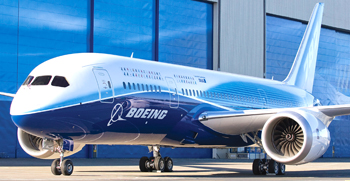Burn Less to Fly Longer

Fuel efficiency is rapidly becoming a matter of survival for airlines and it is increasingly likely that only the leanest and meanest will come through this crisis unscathed.
Believe it or not, the number of in-flight magazines can influence an airline’s fuel efficiency. Consider this. If all the magazines and newspapers aboard a 150-seat Airbus A320 are weighed, the scale would show up a significant figure. Do away with the paper load and the plane would fly farther with the same fuel. Repeat this measure for scores of aircraft, each flying several hundred trips a year, and the savings from the purchase of expensive Aviation Turbine Fuel (ATF) would be considerable. Of course, there would be protests from irate passengers and threats to migrate to rival airlines. Hence, some compromise would be required. So magazines and newspapers printed on lighter paper would be preferred, the number of glossies on offer would be reduced and magazines would have to be shared between passengers. With individualised in-flight entertainment becoming the norm, a partial switch to e-zines could be tried. This is no far-fetched measure but a practical cost-cutting device—one of the many being increasingly adopted by airlines worldwide. In 2004, Alaska Airlines found that by removing just five magazines per aircraft, it saved $10,000 (Rs 4.2 lakh) per year in fuel. That was when oil cost just $30 (Rs 1,282) a barrel.
Rising fuel prices
Times have been difficult for the air transportation industry, especially in the aftermath of the September 11, 2001 attacks that sent travellers scurrying from airports. Nevertheless, the outlook seemed fairly rosy till a few months ago. Today, it appears to be changing for the worse with stunning rapidity—the main trigger being the runaway increase in fuel prices. A barrel of oil rose to a peak of over $147 (Rs 6,320) on July 11 before dropping to more comfortable levels, but the future trend cannot be predicted with any certainty. Several small American airlines have closed shop; many are reporting mounting losses while most airlines around the world are at their wits’ end trying to cope with rising costs. Airlines in India have managed to survive by raising air fares and are now considering truncated schedules—but for how long? If high ATF prices persist, the very nature of air travel, as we know it, may be forced to change. When airlines cut their services as much as some industry analysts believe is essential, there will be fewer, more crowded planes, more inconvenience and less comfort. Fuel efficiency is rapidly becoming a matter of survival and it is increasingly likely that only the leanest and meanest will come through this crisis unscathed.
In the context of air transportation, fuel efficiency is a measure of the energy efficiency of an aircraft commonly expressed as litres per 100 km. It is currently the single most important criterion determining aviation industry profitability. At present, nearly 40 per cent of passenger revenue is utilised to purchase ATF. That figure was around 15 per cent in 2000. Therefore, there is great incentive to reduce fuel consumption, more so in the aviation sector than in any other industry. Nowadays, the most fuel-efficient aircraft needs approximately 3.5 litres to transport one passenger across 100 km. The goal is to reduce this figure to 3 litres per 100 km, which would be better than a small car and eight to 10 times as fast.





